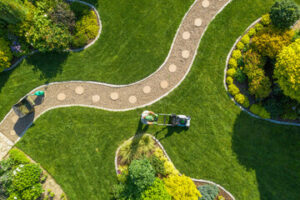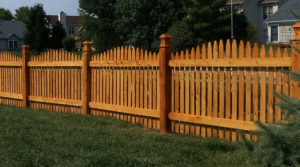Mobile Surveillance Cameras are great for deterring crime, monitoring employees and customers, and protecting inventory and other on-site equipment. They can also be incorporated into smart home systems for additional protection and efficiency.
Many cameras are connected to Wi-Fi, and some use cloud recording. It would be best if you looked for a camera that connects to the same frequency as your router.

Security cameras can be a powerful deterrent against theft and vandalism in public and private settings. They can also alert you to potential problems such as fires, water leaks, and intruders so that you can take action before the damage is done. These benefits make security cameras a smart investment for both homeowners and business owners.
The psychological theory of deterrence suggests that people weigh the costs and benefits of committing a crime before making a decision to do so. When criminals know they are being monitored, they may think twice about committing a crime and may even decide not to commit a crime at all. While this isn’t a foolproof strategy, it can help prevent crimes from occurring and may lead to a decrease in crime over time.
Another benefit of security cameras is that they can provide useful evidence in the event of a crime. Recorded footage can help police officers identify suspects, understand the sequence of events, and ultimately prosecute those responsible. In addition, video surveillance can also help businesses with legal matters such as workplace harassment or discrimination.
Many people are concerned about privacy concerns with the use of security cameras, especially in residential settings. However, proper camera placement and knowledge of privacy laws can ensure that your personal and professional life isn’t invaded.
One of the biggest concerns is that your security camera might be hacked and used for malicious purposes. While this is unlikely to happen at your home, it is important to check that your cameras are secure and only accessible by authorized users. It is also important to change the default login on your security camera, as it can be easily found online by hackers. Many modern security cameras are integrated with smart devices to allow you to communicate with the camera via a mobile app, called two-way audio. Whether you want to check in on your pet or say hello to a visitor, this feature is a great way to interact with the world around you. Lastly, look for security cameras with good night vision and a high IP rating, which indicates how resistant to dust and liquids it is.
Liability Issues
Commercial and residential property owners often use security cameras as a selling point to prospective and current tenants. This is because crime can occur on a building’s premises and, when it does, residents can suffer serious injuries that require medical treatment and result in significant financial losses. A security camera can help deter criminal activity and provide a record of an incident, but only when the cameras are operational and monitored in real time.
If a property owner advertises that the property is secure but a crime still occurs, the victim can file a negligence claim against the landlord or building owner to recover compensation. The claim may be for property damage or a personal injury such as rape, battery, or other harmful physical violence. In cases where the perpetrator of a crime was a third party rather than a resident of the building, the plaintiff can pursue a bodily injury claim to recover damages for his or her injuries.
Many property owners choose to install surveillance systems for a variety of reasons, including liability issues. They can reduce the insurance policy’s payment or even qualify for a tax deduction. However, some property owners have misinterpreted the law and believed that the presence of cameras will increase their liability exposure.
Generally, a property owner’s duty to protect his or her tenants and others lawfully on the premises is based on common sense. If the property owner can demonstrate that he or she took reasonable steps to prevent crime from occurring, there is little reason for someone to sue him or her over the occurrence of an accident or injury. A surveillance system demonstrates that the property owner was actively working to prevent crime from taking place, which can protect him or her from a lawsuit.
If you have suffered an injury as the result of a lack of security measures at a building, you can partner with an experienced attorney from NK Law Group. Our team is prepared to act as your guiding light throughout the negligent security case process, from your initial consultation through your final settlement offer. Contact us today to get started.
Efficiency
Security cameras are great tools for identifying and recording incidents, but they are not a magic bullet. Security cameras must be part of a comprehensive strategy, along with locks, alarms, and physical barriers, to prevent crime. In addition, relying on a camera alone can create a false sense of safety, causing people to neglect other important security measures.
Security cameras can record both video and pictures, allowing you to monitor your space day or night. They can be wired to a storage system like a computer or server, using HDMI (High-Definition Multimedia Interface) or network cables, or wirelessly through Wi-Fi. Some cameras have PoE (Power over Ethernet) technology, which provides power through the same cable that transmits data, simplifying installation and reducing wiring costs.
Most security cameras support motion detection, which records only when there is activity in the field of view. This feature can save you a lot of time and storage space, since minor scene changes are ignored, while more significant movements trigger the recording. Some security camera models allow you to set a threshold for motion detection, which means that only very significant scene changes will be recorded.
Another benefit of security cameras is that they can act as a deterrent against theft and vandalism. The presence of security cameras can make potential criminals think twice about committing a crime, especially in places that are publicly visible to customers and passersby. In addition, the footage from surveillance cameras can serve as evidence against criminals in court.
In the workplace, security cameras can help solve disputes between employees and customers. They can provide an unbiased account of events, helping to clear up misunderstandings and resolve conflicts quickly. Additionally, security cameras can be useful in monitoring workplace health and safety issues, such as a fire or a medical emergency.
It is also helpful to use security cameras in schools, as they can monitor access points and hallways to ensure that all students are being escorted properly. However, it is important to communicate clearly with students and teachers about why security cameras are being used in the school and to create a comprehensive safety strategy that includes School Resource Officers and clear policies.
Security
Security cameras provide a wide variety of benefits for businesses, including deterring crime and other issues, improving operations, safeguarding assets, providing legal protection, and more. In addition to these advantages, security camera systems also help business owners reduce operating costs and improve efficiency by eliminating unnecessary processes or inefficient practices.
For example, some security cameras can be accessed via mobile devices, giving business owners and managers a view of the premises from anywhere in the world. They can also serve as an excellent tool for training and development, helping employees improve their performance. Additionally, security cameras can be used to monitor employee and customer behavior, allowing businesses to identify areas for improvement and enhance operational protocols.
Many business owners worry about theft, especially when it comes to expensive merchandise and equipment. However, the fact that security cameras are often visible can be a powerful deterrent for would-be thieves. Furthermore, if an incident does occur, security footage can be used as proof of theft or vandalism, supporting the case of a business in any legal proceedings.
Security cameras can also be a helpful tool for monitoring large parking lots and other outdoor spaces, where incidents tend to occur more frequently. If you’re looking to install a security camera, it’s important to choose a model that offers a high resolution and an adjustable lens to capture as much detail as possible.
Another consideration is connectivity, as many security cameras require an internet connection to work. For this reason, it’s important to choose a camera that works with your router and uses a secure encryption method, such as AES-256 bit. It’s also a good idea to look for a camera that doesn’t require Wi-Fi to function and can operate on its own, as this will save you money on installation and monitoring fees.
Finally, security cameras can be useful for ensuring compliance with government regulations and industry standards. As a result, they can help you avoid costly fines and lawsuits by providing proof of compliance with these laws. In addition to this, security cameras can be used to monitor the progress of projects or initiatives and to ensure that employees are meeting deadlines.


